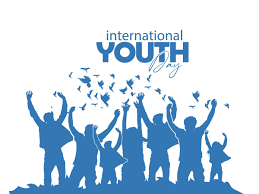Since gaining independence in 1961, Sierra Leone has been led predominantly by two political parties—the All People’s Congress (APC) and the Sierra Leone People’s Party (SLPP). These parties have defined the country’s political landscape, providing leadership during critical junctures in its history. While their governance approaches have shared common challenges, their distinct ideologies, policies, and leadership styles have shaped Sierra Leone’s development in profoundly different ways.
The SLPP, founded in 1951, predates Sierra Leone’s independence. Emerging from the Protectorate’s elite, the party initially catered to the interests of traditional chiefs and rural populations. With a focus on agrarian development and social cohesion, the SLPP positioned itself as a stabilizing force in the early years of independence. Its leadership aimed to unify a diverse nation still grappling with the legacy of colonial rule.
In contrast, the APC, founded in 1960, arose as a more populist alternative. Its founders, including Siaka Stevens, sought to challenge the SLPP’s dominance by appealing to urban workers, marginalized groups, and those who felt excluded from the SLPP’s rural-focused policies. The APC adopted a more centralized and assertive approach to governance, emphasizing industrialization and urban development.
Sir Milton Margai, the first Prime Minister of Sierra Leone and leader of the SLPP, was instrumental in navigating the transition from colonial rule to self-governance. Margai’s leadership was marked by humility, inclusiveness, and a commitment to national unity. Under his leadership, Sierra Leone maintained political stability and cohesion. However, the SLPP’s tenure faced criticism for its conservative approach to economic development and reliance on traditional hierarchies, which alienated certain segments of the population.
The APC’s rise to power in 1968 under Siaka Stevens marked a dramatic shift in leadership. Stevens’ administration was pragmatic but heavily centralized, with a focus on controlling dissent. His leadership emphasized infrastructural development and efforts to industrialize the economy, though these initiatives were often undermined by corruption and mismanagement. Stevens also introduced a one-party state in 1978, arguing that it was necessary for national unity. This move entrenched authoritarian rule and curtailed political freedoms.
The SLPP’s early focus on agricultural development reflected its rural base. The party prioritized investments in education and health, particularly in the provinces, to create a more equitable society. However, its reliance on traditional systems and the slow pace of economic diversification left Sierra Leone vulnerable to external shocks.
Under Stevens and subsequent APC administrations, there was a stronger emphasis on urbanization and industrialization. The APC championed large-scale projects such as establishing industries and expanding infrastructure. Yet, these efforts were often undermined by corruption, mismanagement, and a lack of sustainability. While ambitious, the APC’s economic policies frequently failed to produce long-term growth, exacerbating inequality and dissatisfaction.
The SLPP’s governance style has traditionally been seen as more consensus-driven and less authoritarian. Even during challenging periods, such as the civil war of the 1990s, SLPP leaders like Ahmad Tejan Kabbah promoted dialogue and reconciliation. Kabbah’s leadership during and after the war emphasized rebuilding institutions, fostering peace, and securing international support for Sierra Leone’s recovery.
In contrast, APC governance has often been marked by a more assertive and centralized approach. Stevens and his successors prioritized consolidating power, sometimes at the expense of political freedoms. However, the APC has also been credited with decisive action during crises, such as its response to the Ebola epidemic under Ernest Bai Koroma.
Both parties have faced significant crises during their time in power, and their responses have highlighted differences in leadership style. The SLPP’s leadership during the civil war was marked by a commitment to peacebuilding. Kabbah’s administration negotiated the Lomé Peace Accord, which ended the war and laid the groundwork for post-war reconstruction. The SLPP also focused on rebuilding democratic institutions and restoring international credibility, emphasizing justice and reconciliation. The APC’s response to crises has often been characterized by swift, sometimes heavy-handed, action. For instance, Koroma’s handling of the Ebola outbreak focused on mobilizing international support and implementing strict public health measures. However, critics argue that the APC’s centralization of power sometimes hindered broader participation in decision-making during crises.
Both parties have struggled with issues of corruption and governance, but their approaches to addressing these challenges have differed. The SLPP has generally emphasized institutional reform and transparency, though its track record on combating corruption has been mixed. Initiatives like the establishment of the Anti-Corruption Commission (ACC) under Kabbah’s administration reflected a commitment to accountability, even if implementation was uneven.
The APC, while also committing rhetorically to fight corruption, has faced criticism for tolerating graft within the party. Under Koroma’s leadership, efforts to attract foreign investment were sometimes overshadowed by allegations of mismanagement and favoritism.
The SLPP and APC have had to navigate Sierra Leone’s complex regional and ethnic dynamics. The SLPP, with its roots in the southern and eastern regions, has often been perceived as favouring its traditional strongholds, which has sometimes led to tensions with northern communities. The APC, in contrast, has historically drawn support from the north and western areas. While this has provided a counterbalance to the SLPP’s dominance in other regions, it has also exacerbated regional divides. Both parties have faced criticism for failing to overcome these divisions and for using identity politics to consolidate power.
The SLPP and APC’s visions for Sierra Leone’s future remain distinct. The SLPP emphasizes social equity, rural development, and reconciliation, reflecting its historical base and priorities. The APC, on the other hand, champions urbanization, industrialization, and infrastructural growth, drawing on its legacy of ambitious, though sometimes flawed, development projects.
The leadership of the SLPP and APC has profoundly shaped Sierra Leone’s post-independence trajectory. While the SLPP has prioritized inclusivity, social equity, and reconciliation, the APC has focused on centralization, industrialization, and assertive governance. Both approaches have yielded successes and challenges, reflecting the complexities of governing a diverse and evolving nation.
As Sierra Leone moves forward, neither party can claim a perfect record. The country’s future depends on its leaders’ ability to learn from past mistakes, transcend partisan divides, and prioritize the needs of all Sierra Leoneans. In doing so, the nation can harness the strengths of both traditions and build a more united, prosperous future.












